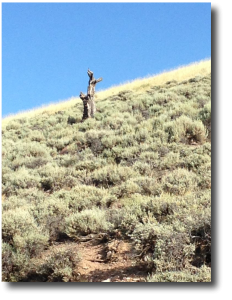Take a moment and look around yourself. Is anything dying?
In contemporary Western culture, death is simultaneously everywhere and nowhere. Like every other group of people in every other time, we cannot reject the inevitability of death; therefore we often find ourselves on a pendulum that swings from immersion to denial. The spectrum between death rejection and and death
 fascination exists on all levels, from the most personal to the most communal. As a culture, we largely have relegated our elders to years spent in nursing facilities rather than family homes; we use every bit of technology we can create to extend life as long as possible; and we have sanitized thoroughly, even sterilized, our funerary practices. Yet, as people in all cultures throughout time have been, we also are pulled toward the exploration of death. In fact, perhaps due to our culture’s relegation of death to places just beyond our view, there seems to be a strong fascination with death and the afterlife, a longing for more information. We contemplate the end of our existence in popular media, albeit often in superficial ways that present us with representations of death that fail to exemplify adequately the complexities inherent in transitioning from this lifetime. Even so, dying today is happening all the time, everywhere.
fascination exists on all levels, from the most personal to the most communal. As a culture, we largely have relegated our elders to years spent in nursing facilities rather than family homes; we use every bit of technology we can create to extend life as long as possible; and we have sanitized thoroughly, even sterilized, our funerary practices. Yet, as people in all cultures throughout time have been, we also are pulled toward the exploration of death. In fact, perhaps due to our culture’s relegation of death to places just beyond our view, there seems to be a strong fascination with death and the afterlife, a longing for more information. We contemplate the end of our existence in popular media, albeit often in superficial ways that present us with representations of death that fail to exemplify adequately the complexities inherent in transitioning from this lifetime. Even so, dying today is happening all the time, everywhere.
We are all dying today. For many of us, that dying is happening in a literal, physical way. The vast majority of people living in our world will experience prolonged deaths. For us, dying today will mean weeks or even months spent in a bed as we experience terminal illness. These terminal illnesses, however, are not our only times of dying. If we live long enough, each of us experiences a multitude of deaths throughout our lives – deaths of relationships, deaths of jobs, deaths of status. When that happens, dying today may feel like grieving in secret as we rush into building the replacements for what has died in our personal lives. Look around; someone you know is dying today.
Now, widen your viewpoint and look again for what is dying today. You may see dying some of our institutions, economic structures, political systems, languages, ways of life, species, and portions of our beautiful planet. Although each of these deaths affects everyone, we often do not honor these types of dying at all. Instead, our attention rushes to that which is being born, to the sparkly new things all around us. We fail to honor what is dying today. But we live in a pivotal moment. We can choose to hold with awareness and tenderness both the things that are dying and those that are being created. They are not separate from one another.
Dying today provides us with an opportunity. Whether that dying is personal or cultural, physical or metaphoric, it is a portal into greater consciousness and presence. When we pay attention to not only what is alive around us but also to what is dying, something profound happens. We realize that to be alive is, in many ways, to be dying. The two are intimately intertwined. Allowing ourselves to awaken to what is dying today is fundamental to being most alive.